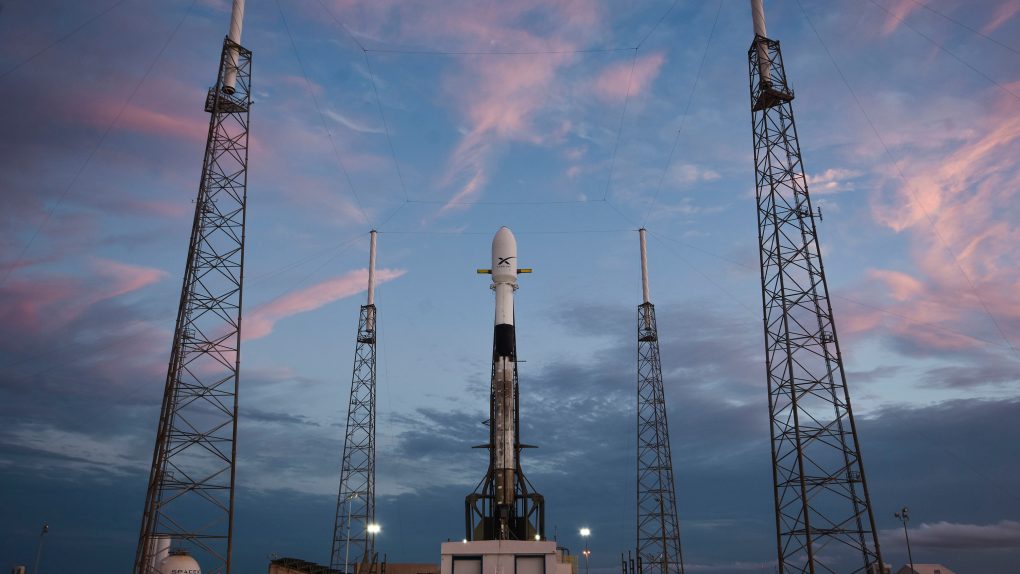- SpaceX launched another 57 of its Starlink communications satellites into orbit this week, bringing the total number of Starlink satellites in orbit to just shy of 600.
- The satellites will provide high-speed internet access for users with special terminals, but the program is still in an early beta phase.
- Starlink satellites have drawn ire from astronomers as they have a habit of ruining photos of space taken from Earth.
SpaceX has been on a roll with its Starlink program as of late. The company has sent hundreds of the tiny communications satellites into orbit and it just did it again, packing another 57 satellites into its Falcon 9 along with a pair of satellites for a company called BlackSky. The mission was delayed from several weeks ago, but finally took to the skies, and it seemed to go off without a hitch.
The launch took place from Kennedy Space Center, with the Falcon 9’s first stage pushing the rocket into orbit before making a successful landing on one of the company’s drone ships positioned in the ocean.
SpaceX’s Starlink program is the company’s big bet on communications becoming a source of revenue. With a grid of potentially tens of thousands of satellites in orbit, SpaceX hopes to be able to provide high-speed data access to areas that still don’t have it, while also getting business from consumers who already have high-speed internet but aren’t happy with their service.
To date, the company has launched 10 Starlink missions, and there are nearly 600 Starlink satellites already in orbit around Earth. Eventually, the company dreams of having tens of thousands of the satellites in orbit, but SpaceX boss Elon Musk has stated that it could launch the service on a much smaller scale sooner rather than later.
The company has already provided sign-up forms for those interested in testing out the service once it becomes available, and SpaceX board members have already had the opportunity to take the service for a spin using beta hardware. Once the service rolls out, users will need an at-home terminal to receive the data signal from the satellite network, and that hardware is something the company is working on perfecting as we speak.
Unfortunately, as SpaceX has continued to launch its internet satellites, they’ve become a real headache for the astronomy community. We’ve already seen many examples of space observations being hampered by the company’s satellite horde as it passes overhead.
SpaceX says it’s trying to mitigate this in a number of ways. By painting the satellites with a matte black coating and applying deployable shades to the antennas that reflect sunlight back to Earth, SpaceX hopes to be able to continue to launch its satellites without raising too much ire from the scientific community. Whether they can actually make that happen remains to be seen, but at least they’re trying.








